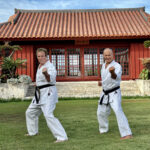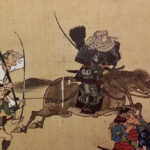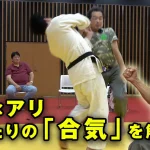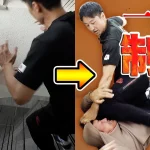Jiu Jitsu in the Netherlands
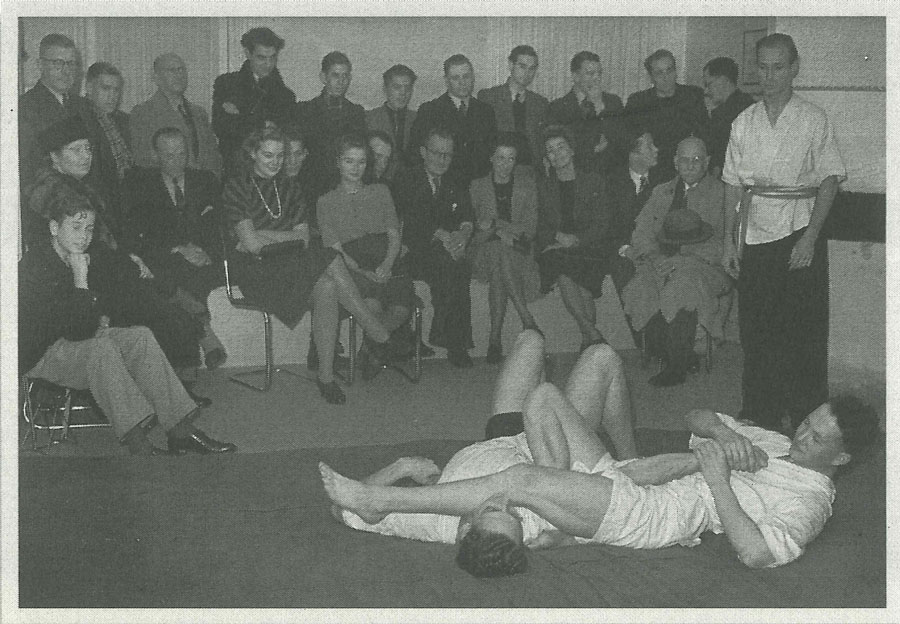
During a demonstration, Hans van der Stok perfoms a straight-arm lock while Johan van der Bruggen looks on(from photo album of Hans van der Stok).
Text by Johan Smits
The Jiuijitsu Photo Album of Hans Van Der Stok
I have been practicing jiujitsu since I was fourteen years old, eventually becoming a licensed teacher of the art and later starting research on the history of jiujitsu in my country. My research has been going on for the last twenty years or so and concentrates on the period of 1900 – 1945. I have always had a particular interest in the Second World War years. Owing perhaps to a prevailing sense of peril and uncertainty, jiujitsu became increasingly popular in the Netherlands during those dark days.
During my research of the history of jiujitsu in the Netherlands I have found in a family archive a scrap- and photoalbum. It was filled with photos of jiujitsu techniques, schools and newspaper articles. The album was dedicated to remembering Hans van der Stok, born in Balikpapan on the 21st of March 1919 and deceased on the 11th of April 1945 in Mauthausen. The name of Mauthausen, a notorious concentration camp in Austria, jumped right from the page to my eyes. It was then that I decided I wanted to find more about Hans.
The album had belonged to Hans, who was an ardent practitioner of jiujitsu. He had escaped from occupied Holland to England, trained as a secret service agent and returned to Holland to join the Dutch resistance. While resisting the occupation of his homeland he was captured, imprisoned and eventually executed.
Learning more about him and about his fate I was deeply moved. The courage shown by this young man was remarkable. My idea was to publish a little book on him, so that the younger generation of jiujitsu practitioners could learn about him and about the highest offer he brought while fighting against the occupier of his country. For this I made use of the album, which I expanded with some biographical information and comments on the techniques shown. The publication of this album and consequently this article are the result of this idea.
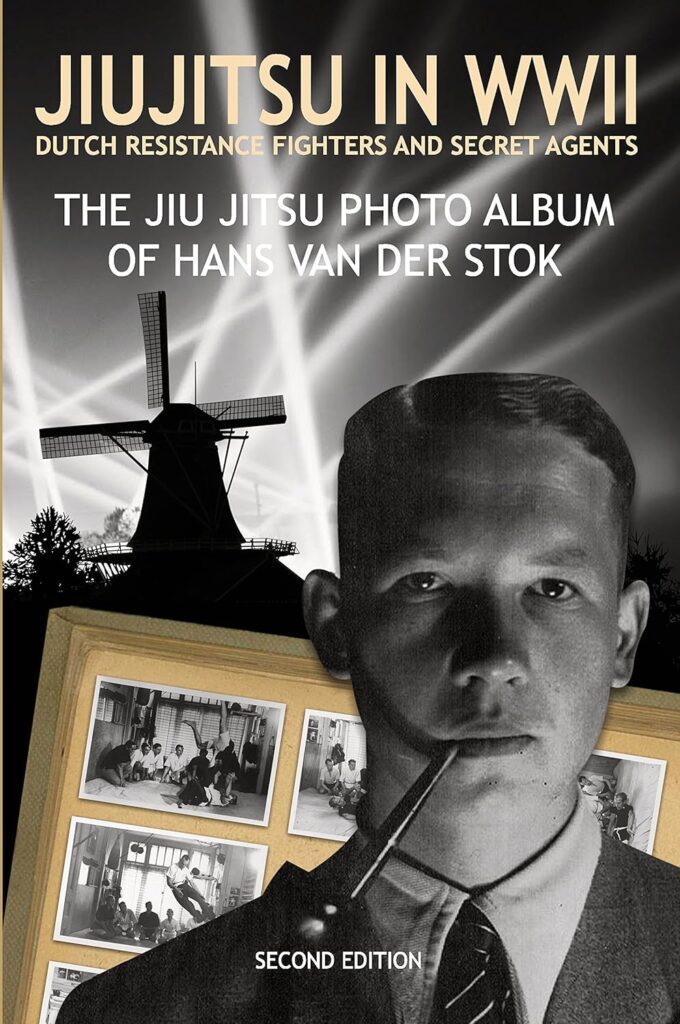
『Jiujitsu in WWII: Dutch resistants fighter and secret agents 』Paperback, La Douze (September 18, 2017), by J H G Smits (Author)
Jiu-Jitsu as Practical Self-Defense and Its Spread in Europe
At the start of the 20th century, the practice of jiujitsu spread from Japan to Europe. In the United Kingdom, France and Germany it was taught by a select number of practitioners. These teachers were mainly Japanese who had settled in several big cities of Europe. Paris in France, Berlin in Germany and London in the UK were probably the first cities in Europe where jiujitsu could be learned. The Japanese teachers were affiliated with Japanese trading companies, or had set up shop on their own.
The teachers originally were trained in classical jiujitsu styles; Tsutsumi Hozan-ryu, Fusen-ryu, Tenjin Shinyo-ryu, to name a few. However, they most likely refrained from teaching jiujitsu in a classical way. The main interest of their students was self-defence, so the material taught by the teachers was oriented towards this, focussing mainly on practical techniques and not on the classical kata of the traditional schools.
The militaries and police forces showed an immediate interest in this effective art of unarmed combat. Soldiers from the earlier mentioned countries were given training or courses in jiujitsu. Jiujitsu proved to be very effective in the hand-to-hand combat of the trenches in the First World War, where infantry made use of primitive weapons like knives, clubs and knuckledusters. Night-fighting and infiltration of enemy territory also necessitated close combat, armed or unarmed. The Dutch army was mobilized during this time, but the Netherlands officially remained neutral in the conflict.
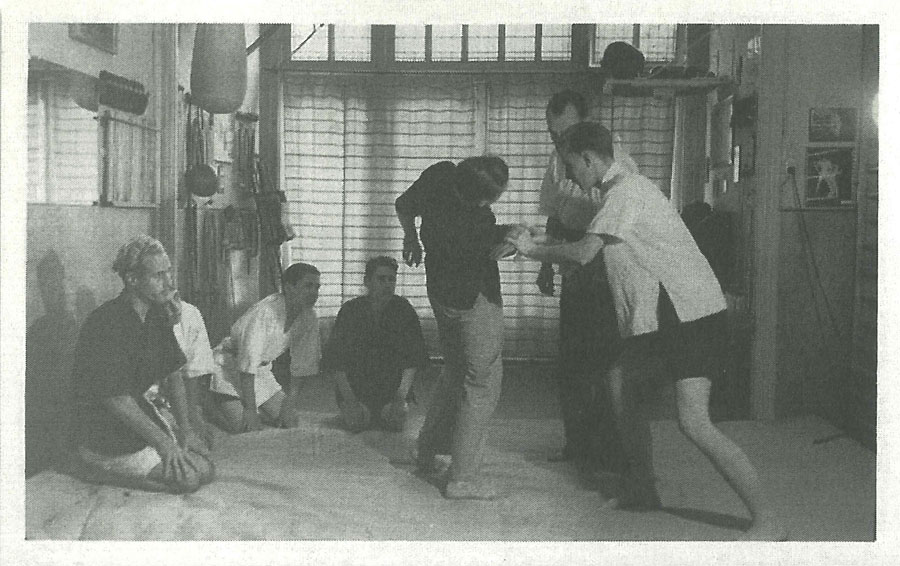
Reverse outside wrist lock.
The Early Days of Jiu-Jitsu in the Netherlands
Jiu Jitsu was introduced in the Netherlands by P.M.C. Toepoel, a boxing and physical education teacher with a keen interest in self-defence. He made a living in The Hague where he taught boxing and physical education and gave indoor training. He had learned jiujitsu in Paris and London from Japanese teachers residing there. He probably travelled to these cities in summer vacations. He is also the author of two of the first books in Dutch mentioning jiujitsu. One is titled “Jiujitsu” and another one “Weerbaar, handleiding voor zelfverdediging”, or in English: “Resilient, manual for self-defence”.
Between 1910 and 1918 he started teaching jiujitsu in the Hague, and from there the art began to gradually spread. In the years before the Second World War a number of instructors emerged in the Netherlands, such as K.T. Yo and L. Boretius, who both taught in Amsterdam, Vladimir Kasulakow, a former pilot in the Russian air force, Maurice van Nieuwenhuizen and his student, A.W. Tops, as well as Johan van der Bruggen. These last three gave demonstrations all over the country, but mainly taught in the Hague. Maurice van Nieuwenhuizen was a student of P.M.C. Toepoel, and Johan van der Bruggen was taught jiujitsu, Judo and probably Kendo in Surabaya in the Dutch East Indies (now Indonesia), by a Japanese resident of the city who was named Taiji Nakada.
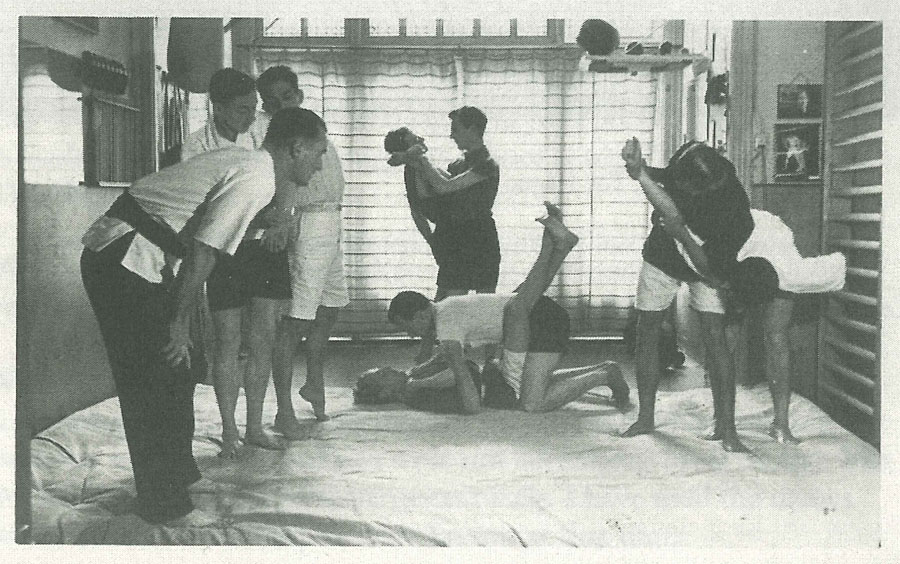
Interiior of the sport school run by Maurice van Nieuwenhuizen, who is standing far left. Van der Bruggen executes a kidney scissor while lying on his back. Hans van der Stok(dressed all in white) is on tiptoe.
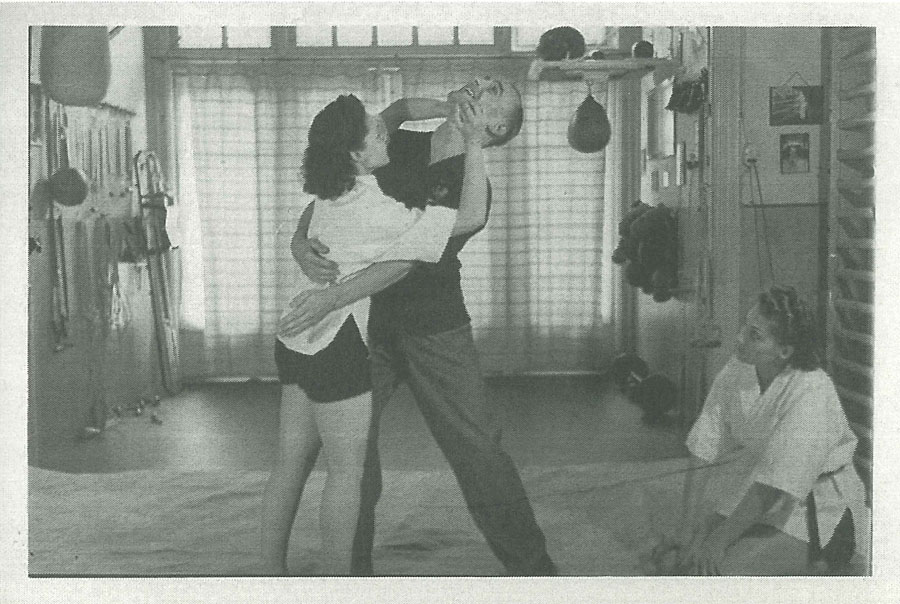
A push to the chin, pressure on the nerves in the neck, as defence from a body clasp.
Prior to 1940, there were probably no more than ten jiujitsu instructors working in the Netherlands, and there was no cooperation between them to speak of. It was most likely Van Nieuwenhuizen who conceived the idea for a jiujitsu association, perhaps as early as 1937 or 1938. The organization in question became the Nederlandsche Jiu Jitsu Bond (NJJB), and was quickly regarded as the official body for the art in the Netherlands. The NJJB offered courses for an officially recognized instructor’s certificate, while students could train for an amateur certificate. At first only one amateur certificate was available, though later practitioners could obtain amateur certificates A, B and C.
Research on these teachers is still ongoing, but P.M.C. Toepoel is generally considered to be the first teacher of Jiujitsu in the Netherlands, and it is more or less agreed upon that the art in this country started with him. Mister Toepoel himself never claimed to be a master of the art.
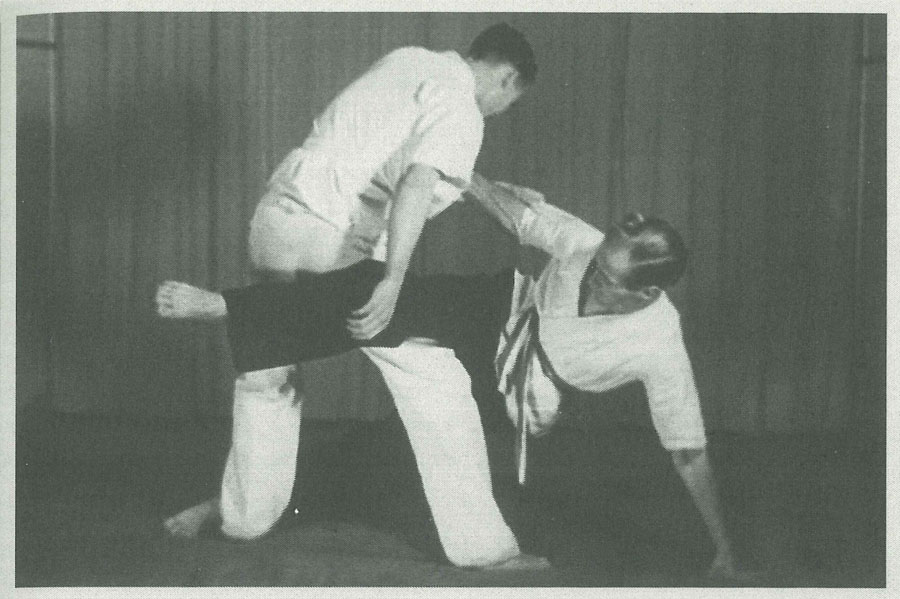
Reversed-leg scissors.
Johan van der Bruggen was born in 1916 in Haarlem. When he was three years old his family travelled to the Dutch East Indies, settling in Surabaya. At thirteen, Johan was introduced to Jiujitsu and Judo by a Japanese resident named Taiji Nakada, who is a bit of a mystery. I have been doing research on him for many years now, but there is still very little known about him. He may have been a diplomat or employed by a Japanese company. I do have a date of arrival of the ship on which he arrived, as well as an address in Surabaya where he lived. In correspondence it has been mentioned that his dojo was in Kyoto, but this has not yet been established as fact.
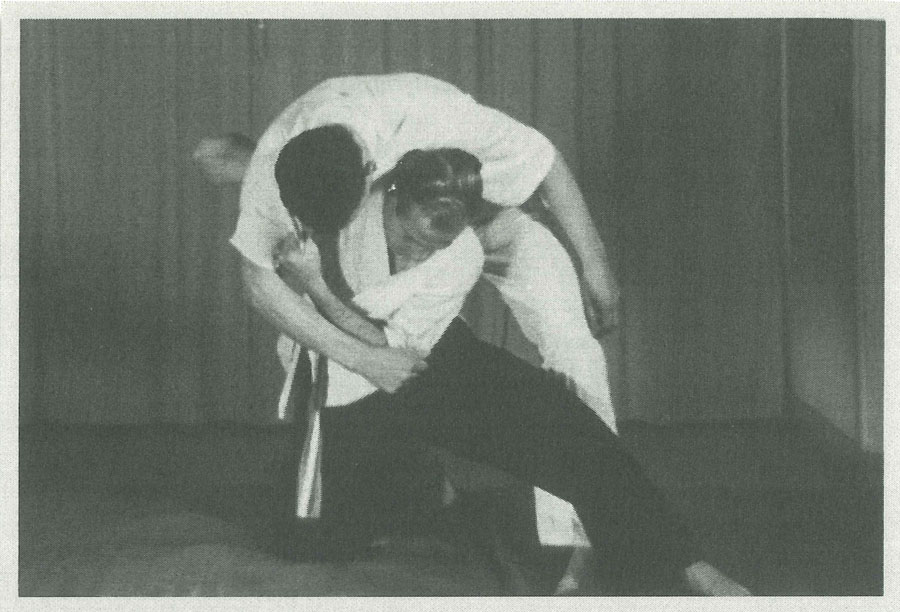
Shoulder throw on one knee. known, according to Van deru Bruggen, as the ‘Japanese’ shoulder throw.
Johan trained daily until 1935, the year in which he received a Japanese certificate of mastery from Mister Nakada. The same year he would return to the Netherlands to further his education. It is unclear what made him change his plans, but not long after arriving in the Netherlands he started teaching Jiujitsu. He offered lessons in a small backroom of a chess club, “De Westertoren” in Rotterdam. After teaching in various locations in the city, he opened the first Rotterdam school for Jiu Jitsu and Judo in 1938. His no-nonsense approach, both in his teaching and own training, suited the hardworking and down-to-earth people of the city. His lessons quickly grew in popularity and his school flourished. All was well until early May 1940, when most of the city centre was destroyed in a bombardment of the German air force.
A personal note: the bombardment in which his dojo was destroyed was the same one my maternal grandmother, a widow with eleven children, was in the midst of. They all survived unscathed, but lost everything in the bombings and fires which destroyed the city. All they were left with were the clothes they were wearing that day.
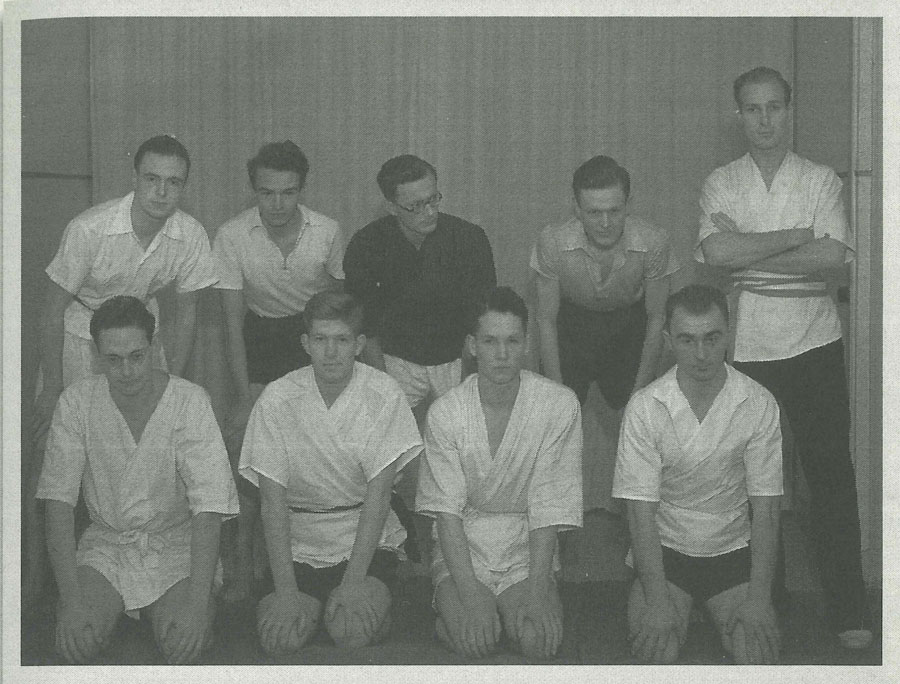
Group photo at Van der Bruggens’s school at Zoutmanstraat 61a, The Hague. back row, far right: Johan van der Bruggen. second from the right in the front row: Hans van der Stock.
Maurice van Nieuwenhuizen ran a gym in the Hague where he taught Jiujitsu. After his dojo was destroyed, Van der Bruggen started teaching at this school until he got an opportunity to open a school of his own again. In September 1941 he opened his school, “Nakada”, named after his teacher, in the Zoutmanstraat in the Hague.
Dutch Resistance Fighters and Secret Agents

Johan Paul(‘Hans’) van der Stok (1919 -1945)
Hans van der Stok was born in Balikpapan on Borneo, which was then in the Dutch East Indies, on the 21st of March in 1919. He grew up in a family consisting of his father, Cornelis, who worked for shell, his mother Annie, two brothers, Felix and Bram, and a sister, Anke. The whole family was fond of sports. They mainly practiced hockey, ice-hockey and tennis. Hans was the only one who trained in Jiujitsu, this was really “his thing”. I have been unable to discover when or where he began training, but eventually he became a student of Johan van der Bruggen.
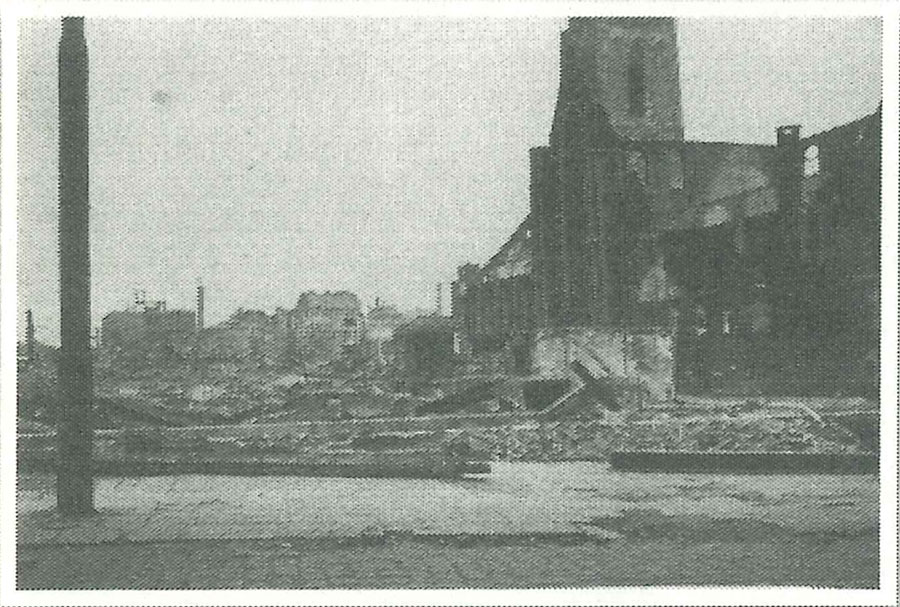
The bombing of Rotterdam.
As a young man he went to the Netherlands and joined the navy as a cadet of the KIM, the Royal Institute of the Dutch Navy. When the Second World War broke out, Hans seized on the idea of escaping to England after the successful escape of his older brother, flight officer Bram van der Stok. In 1943 Hans succeeded and he arrived in Scotland where he took up active duty. He was later assigned to the Dutch Special Operations Bureau, with the navy rank of cadet corporal. He was trained as a micro-photographer. Other agents were trained in radiotelegraphy and cryptography. The basic training of the agents consisted of a parachute course at Ringway Airport, shooting, motorcycle driving, swimming, running and close combat, in which his experience with Jiujitsu undoubtedly came in handy.
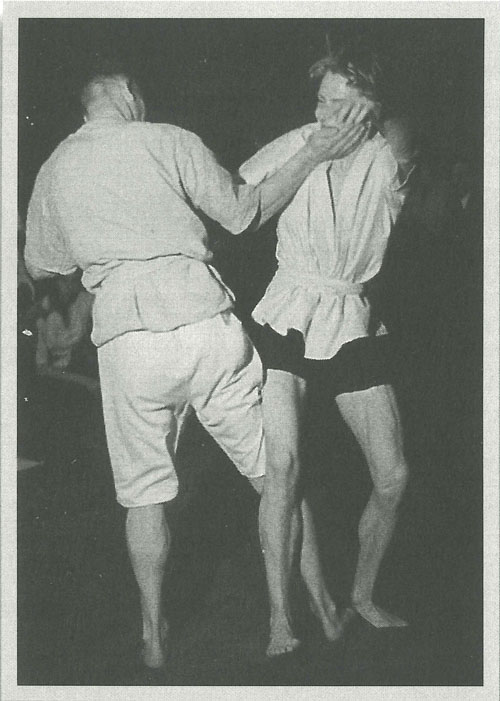
Chin throw executed by Hans van der Stok.
On the night of the 19th of September, 1943, Hans parachuted into occupied Holland together with a fellow agent, Otto Wiedemann. All agents of the Bureau Inlichtingen were dropped “blind”, meaning there was no liaison waiting to assist them on the ground. After some initial difficulties, Hans and Wiedemann relocated to Amsterdam. Hans took refuge in the home of his brother Felix on the Prinsengracht. They worked from several addresses in the city, serving as radio telegrapher, code breaker and micro-photographer. The houses they worked from were rented by Hans’ brother, reserve officer Felix van der Stok. Messages would sometimes be sent from an attic room of the address where Hans was living, on the Courbetstraat. This was the address where Hans stored his photographic equipment. He and several other agents met up in the city and worked together. They divided the workload and got on with the business of encrypting and decoding messages. This went on for some time and all went well, until Wednesday the 2nd of February, 1944. While Bram Grisnigt, one of the agents, was transmitting messages from the attic at one of the houses, 1047 Prinsengracht, he heard someone coming up the stairs. Assuming it was Hans, he continued transmitting. In the next moment he was overrun by agents of the German Sicherheitsdienst, or SD, the intelligence branch of the SS. The Germans, a group of 36 men, had already found their way to the roof and searched the rest of the house. Moments later, Hans arrived with a stovepipe under his arm. Seeing the Germans, he claimed to have come from the forge to deliver the stovepipe, but because he had entered the house with a key of his own, the Germans did not believe him. No sooner had they arrested him than when his brother Felix arrived. Searching him as well, the German soldiers found a pistol and ammunition. The Dutch agents tried to fight the Germans in an attempt to escape. Especially Bram put up a great fight, trying to fight off his captors and make a run for it. He was ultimately subdued and had his face beaten up. They were all taken to the notorious SD police station at Euterpestraat. This was the last time Bram saw Hans and Felix.
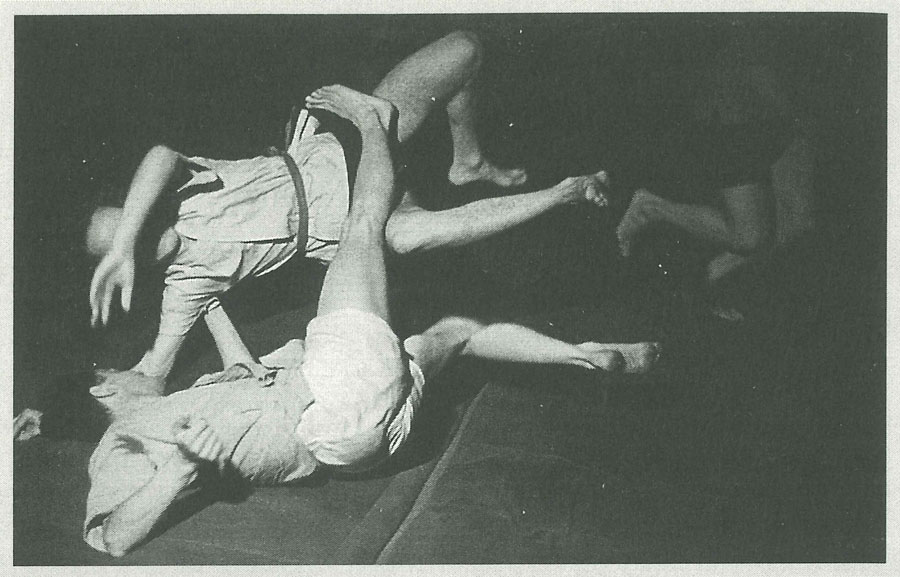
Sideways stomach throw by Hans van der Stok.
Felix was born on the 21st of August in 1913 in Surabaya on Java. In civilian life he worked as an inspector for an insurance company. He passed away in the concentration camp Neuengamme on the 12th of January in 1945. Hans was executed in Mauthausen on the 11th or 12th of April in 1945. His family learned of this only on the 29th of August that same year.
Bram Grisnigt was born on the 26th of January in 1923, and passed away on the 11th of January in 2019. Of the three men who were arrested together, both Felix and Hans died during the war. Bram Grisnigt was the only one to survive. He never forgot Hans and Felix. In 2016 I contacted him asking for information on Hans. At that time he was very busy taking care of his elderly wife, who had fallen ill. When I told him I was working on a little book to remember his friend and fellow secret agent Hans van der Stok, he was kind enough to help me. He provided a lot of information. I clearly recall his answer when we spoke on the phone: “I am very busy at the moment, but can you send me an email?”. I did send him an email and so got into a correspondence with him. He gave a lot of information on Hans, himself and on their lives during the War years in London. His adventures were written down and published in a book by Gram de Graaf, titled: “Spion van Oranje, het oorlogsverhaal van Engelandvaarder Bram Grisnigt”, or in English: “Spy of Orange, the war story of England sailor Bram Grisnigt”.
The Value of a Single Scrapbook in Historical Research
A note at the front of the album suggests that it was given to Hans, or that Hans started compiling the album, in August 1940. It is unlikely that he would have taken the album with him to England. After the war, his mother presented it to his teacher, Johan van der Bruggen, as a memento. It seems reasonable to conclude that Hans compiled the album between 1940 and 1942, and that he left it with his mother for safekeeping, possibly planning to retrieve it and continue working on it when his circumstances improved. Although the work is a scrapbook and a photo album, it is compiled in such a way that it may have doubled as a simple handbook, or better perhaps a memento for Jiujitsu techniques. This seems not unlikely, as Hans started working on it at a time when no good illustrated book on Jiujitsu existed in Dutch.
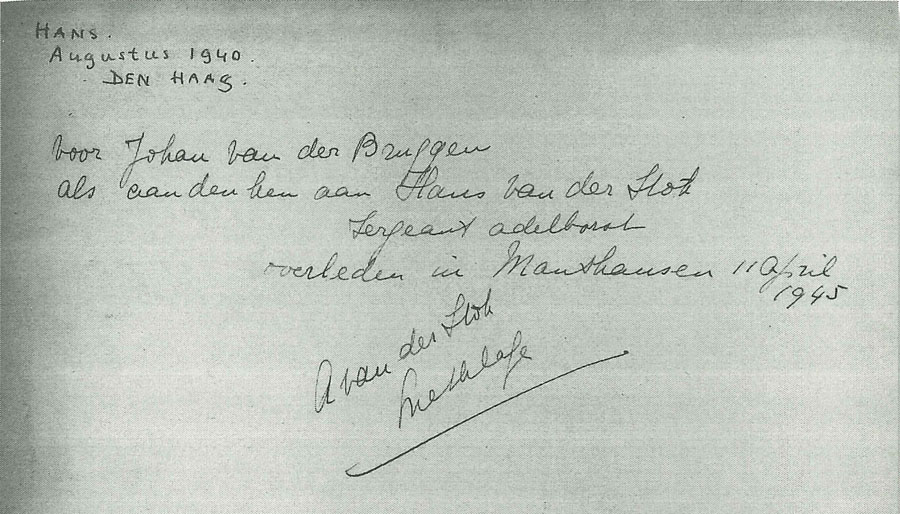
Hans, August 1940, The Hague Presented to Johan van der Bruggen in remenbrance of Cadet Sergeant Hans van der Stok, who passed away in Mauthausen on 11 April 1945. A. Van der Stok-Snetlaghe
Some of the photos in the album show the interior of “Nakada”, the school of Johan van der Bruggen in the Hague. Van der Bruggen is executing some techniques on Hans. Other photo’s show the interior of the school of Maurice van Nieuwenhuizen in the Hague. Thanks to Hans his photoalbum a small piece of the history of jiujitsu in The Netherlands is available to us today. But just as training never stops so does research never stop.
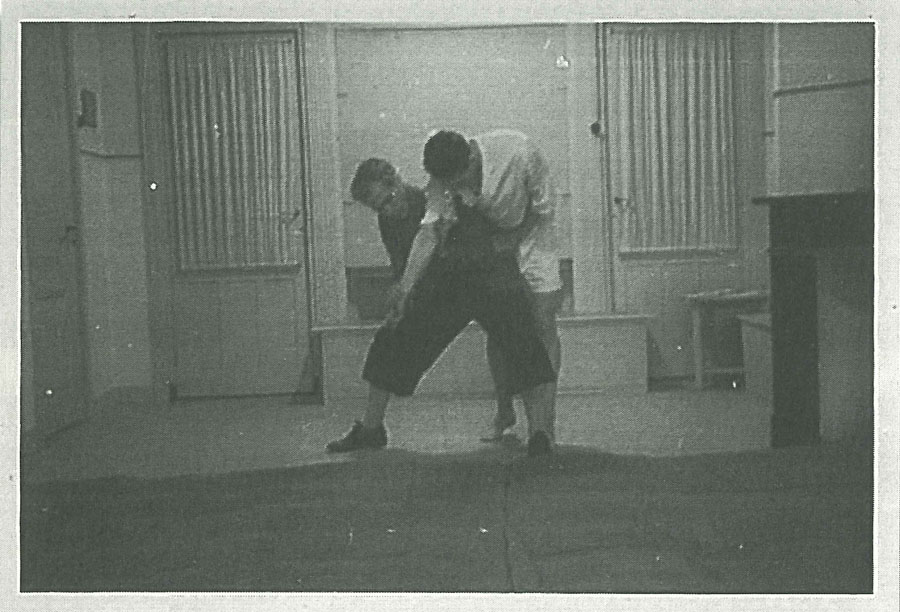
Hip throw with arm lock performed on Hans van der Stok by Johan van deru Bruggen.

